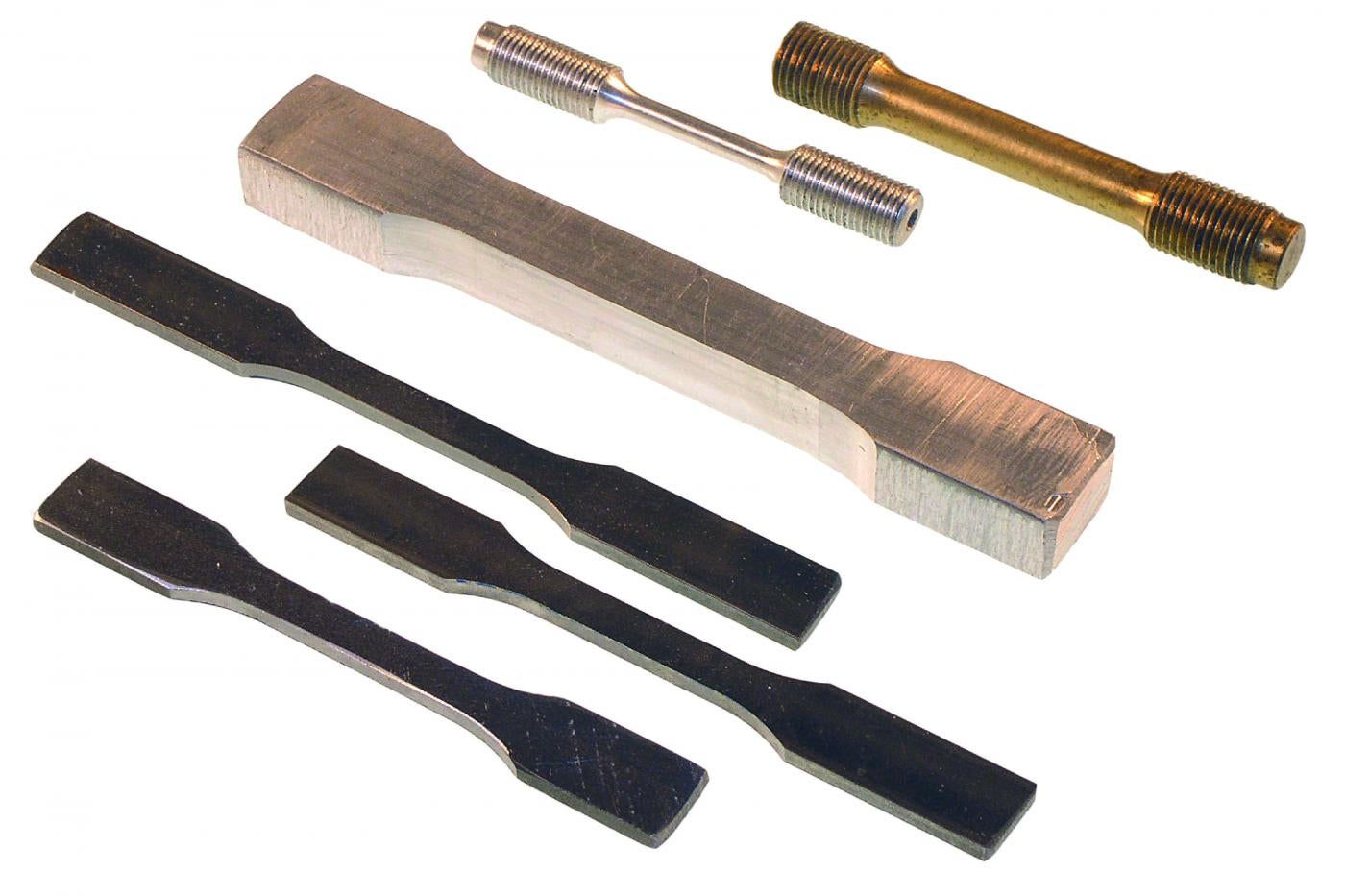 by "You can tell a Finn but you can't tell him much" (youcantellafinn)
by "You can tell a Finn but you can't tell him much" (youcantellafinn)
Published 01/18/2017 at 15:14
 by "You can tell a Finn but you can't tell him much" (youcantellafinn)
by "You can tell a Finn but you can't tell him much" (youcantellafinn)
Published 01/18/2017 at 15:14
Tags: slow-mo guys
; science
; tensile testing
STARS: 0
You should be ashamed of yourself.Ē
!!! UNKNOWN CONTENT TYPE !!!
Iím curious what type of steel that rebar is made from. It has much lower ductility than I would have expected and the break appears to be a brittle fracture instead of a ductile tear.
 "RamblinRover Luxury-Yacht" (ramblininexile)
"RamblinRover Luxury-Yacht" (ramblininexile)
01/18/2017 at 15:24, STARS: 0
I would expect most rebar to be ductile iron, though I donít know that for a fact. Cheap and no need to highly process, though if the supplier is sketch, it can have grain weirdness.
 "jimz" (jimz)
"jimz" (jimz)
01/18/2017 at 15:33, STARS: 0
the bar did start to stretch, but itís not a uniform piece like your usual tensile test sample.

Iím guessing there were dislocations all along the piece of rebar, with one finally letting go. a tensile test sample will visibly ďneckĒ down at the fracture point.
 "diplodicus" (diplodicus)
"diplodicus" (diplodicus)
01/18/2017 at 15:37, STARS: 0
I got a tour of a factory in TN that makes rebar. They said they just used scrap steel, no idea what grade. They melted it down and poured it into large ingots. The crucible was down when I was there. Then they put the ingots in a furnace, and roll them through the dies until its the right size.
Hottest place Iíve ever been, 125F or some shit.
 "RamblinRover Luxury-Yacht" (ramblininexile)
"RamblinRover Luxury-Yacht" (ramblininexile)
01/18/2017 at 15:51, STARS: 0
Scrap steel with enough cast scrap in it probably evens out somewhere around ductile iron level carbon content, and if it doesnít, itís easy to add carbon, so I was probably right. Thanks.
 "You can tell a Finn but you can't tell him much" (youcantellafinn)
"You can tell a Finn but you can't tell him much" (youcantellafinn)
01/18/2017 at 15:57, STARS: 0
It did stretch slightly, but still exhibited a brittle fracture when it did fail. Ductile materials will exhibit a cup and cone type of a tear where they fail along with having much larger reduction in area and elongation. That failure is basically a fracture across the face of the test piece. Pictured below is what a ductile specimen looks like when it fails.

 "You can tell a Finn but you can't tell him much" (youcantellafinn)
"You can tell a Finn but you can't tell him much" (youcantellafinn)
01/18/2017 at 15:59, STARS: 0
Interesting and still weird to me that it looks like a brittle failure. Hot rolled steel is generally fairly ductile, though if it had enough carbon content it could get brittle.
 "Highlander-Datsuns are Forever" (jamesbowland)
"Highlander-Datsuns are Forever" (jamesbowland)
01/18/2017 at 16:02, STARS: 1
Itís low grade crap, maybe 30-40 ksi at the most. When we need things to be extra strong I have to specify special extra good rebar, that is 60 ksi, it just doesnít elongation very well.
 "You can tell a Finn but you can't tell him much" (youcantellafinn)
"You can tell a Finn but you can't tell him much" (youcantellafinn)
01/18/2017 at 16:04, STARS: 0
Iím getting even more confused. Usually low strength steels have good ductility. There must be lots of nastiness in the steel that they use for making rebar.
 "Highlander-Datsuns are Forever" (jamesbowland)
"Highlander-Datsuns are Forever" (jamesbowland)
01/18/2017 at 16:10, STARS: 0
Carbon content is everything! And yes Iím sure they donít make most rebar to proper chemistry that gives steel plastic properties. I think my standard steel pipe spec is 45 ksi with 2% elongation but carbon content/equivalent is kept low <4%.
 "You can tell a Finn but you can't tell him much" (youcantellafinn)
"You can tell a Finn but you can't tell him much" (youcantellafinn)
01/18/2017 at 16:14, STARS: 2
Ha, I laugh at low carbon being <4%. Iím in the welding industry where low carbon is <0.05%. Almost all of what we deal in is <0.10% C and I canít think of anything that even reaches 1% C.
 "Highlander-Datsuns are Forever" (jamesbowland)
"Highlander-Datsuns are Forever" (jamesbowland)
01/18/2017 at 16:19, STARS: 0
I donít know what I was thinking, 4% would be like cast iron.
B. All steel used for fabrication shall have a maximum carbon content of 0.25%, a maximum sulfur content of 0.015%.